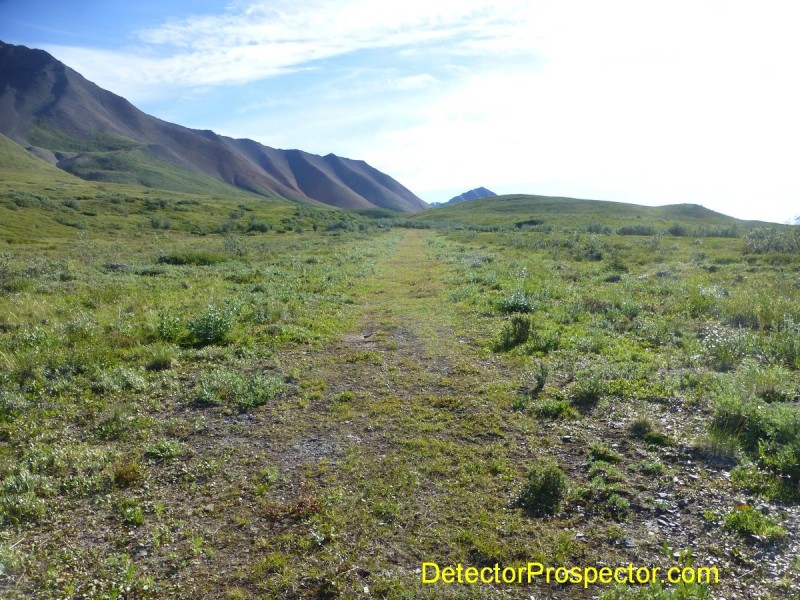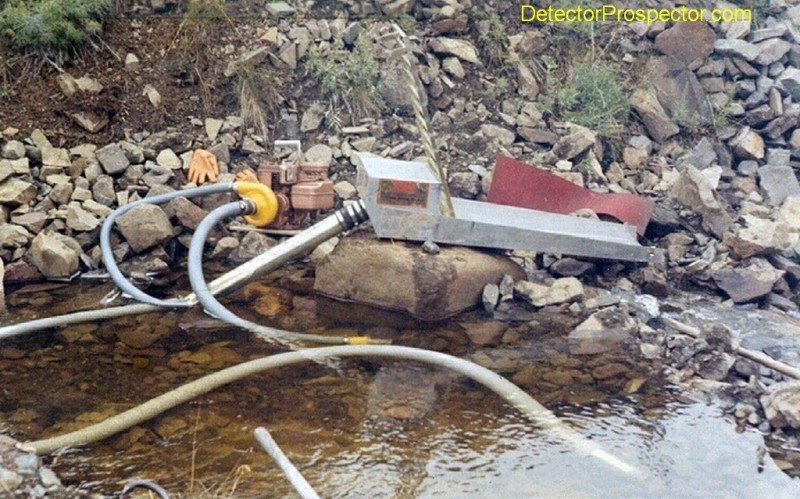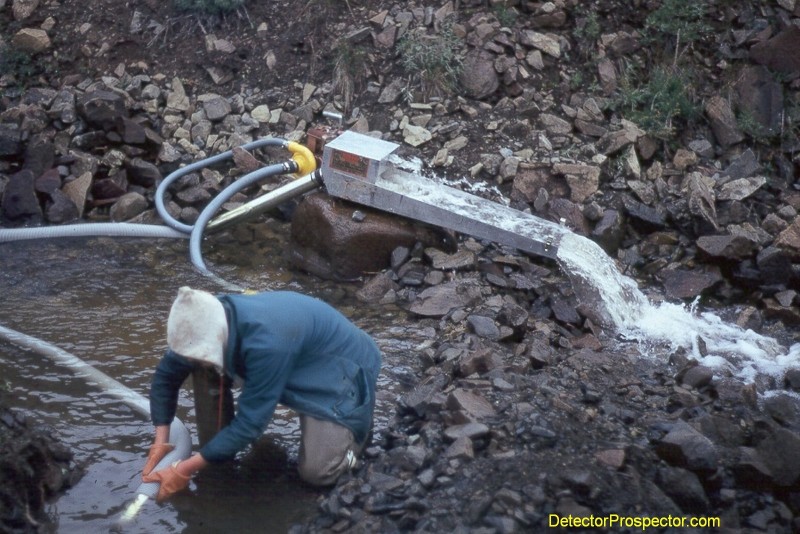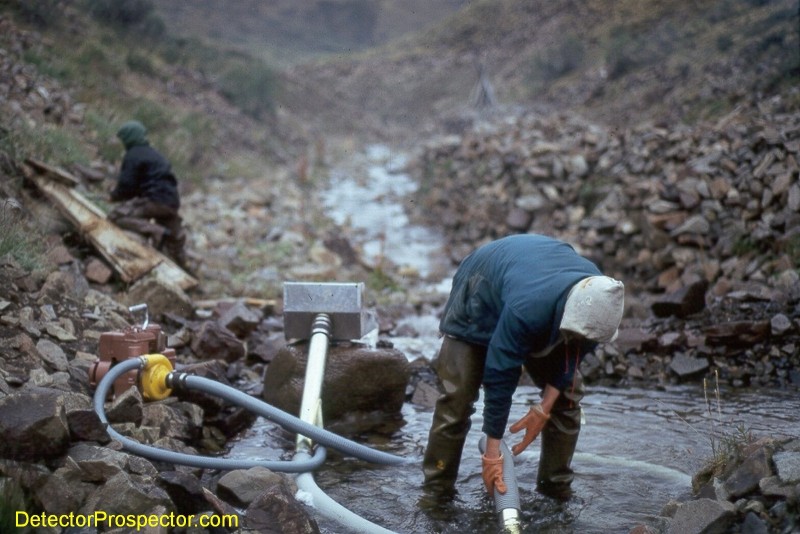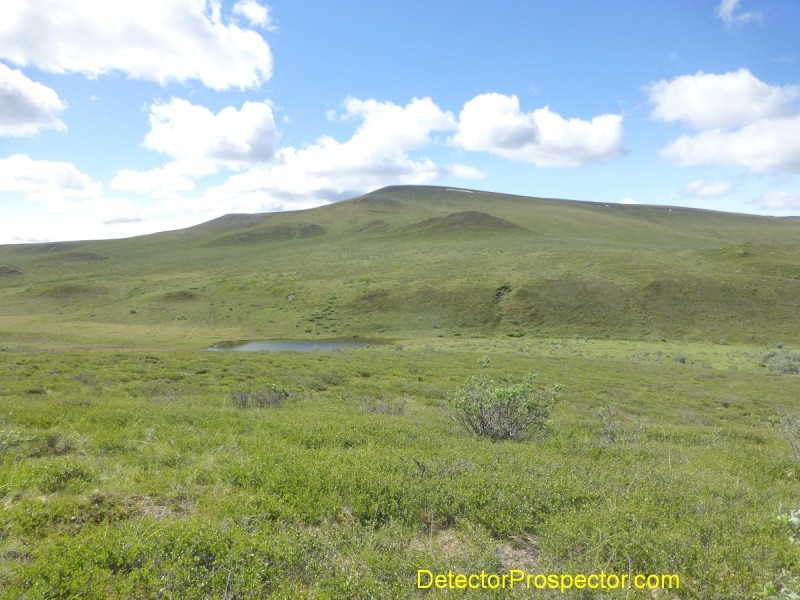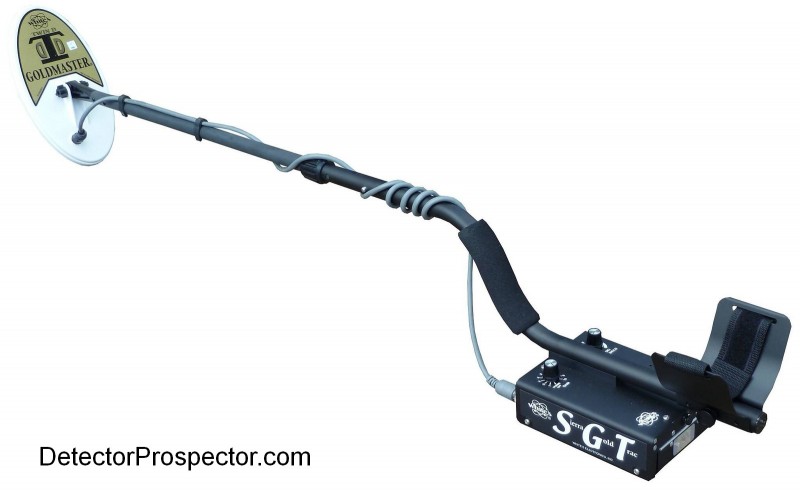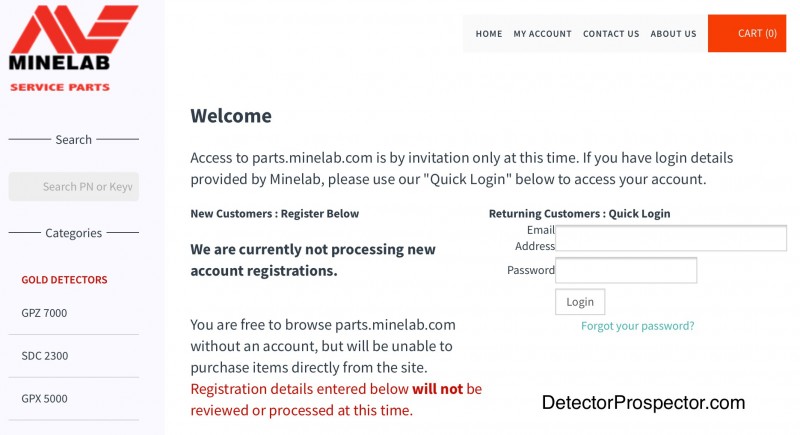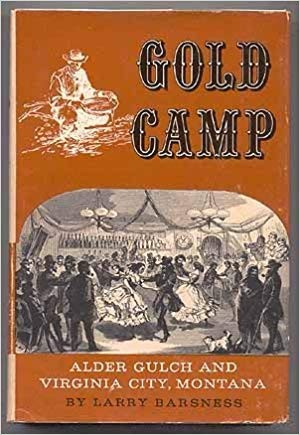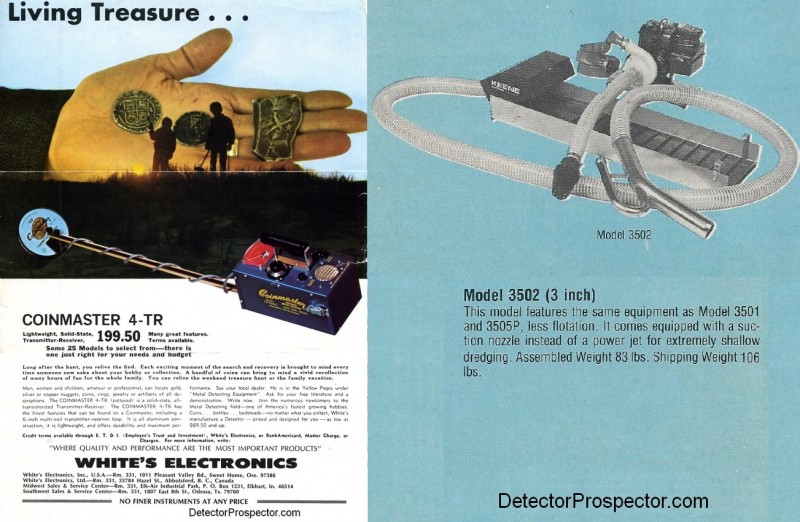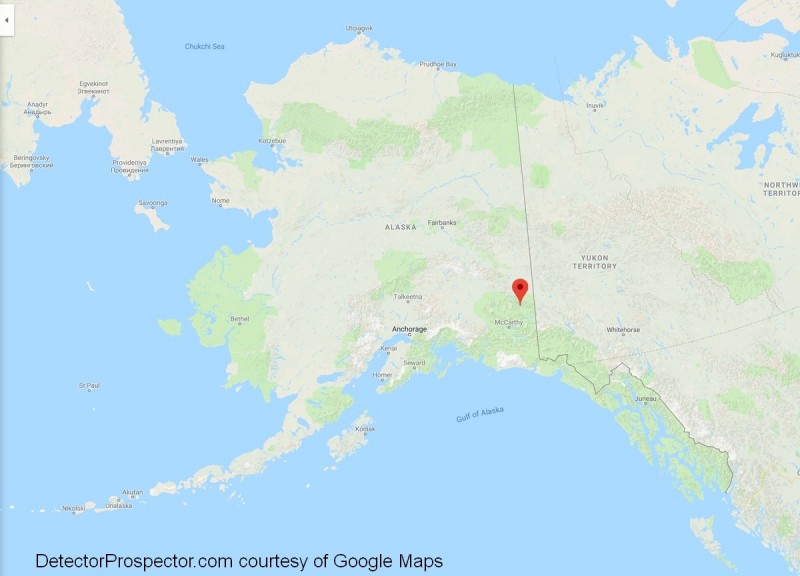-
Posts
19,806 -
Joined
Content Type
Forums
Detector Prospector Home
Detector Database
Downloads
Everything posted by Steve Herschbach
-
Hey Bob! My fathers Cub had smaller tires if my thinking is right. I have seen those 36” tires and they are crazy tall. I am thinking ours were more like 24” - 28”? Anyway, we had some good times at Mills! Thanks for any help you give John. ?
-
Nope, I was a mere tyke Harry. I remember the old crank phone more for what happened to it later. It sat around in a shed and my friends and I played with it electrocuting each other by turning the crank while holding the wires. Funny what makes for a toy when you have to make your own!
-
The main problem with a Super Cub is the lack of cargo space. Fuel can also be a problem in Alaska, and you often have to bring your own. That being the case the best way to access the Chisana area is by driving supplies up the highway into the Slana area, and then ferrying out of there into the mines. From Slana a person flies southeast towards Nabesna and through Cooper Pass. Nabesna is closer but the airstrips there are private. The old boom town of Chisana is in the valley down below the gold creeks, and has been more or less continually occupied until the present day. There is a very large airstrip there but no facilities or stores, just some private residences. We always bypassed Chisana and flew straight into the mines, and only used the Chisana strip if weather at the higher mine elevations forced us to land and wait for better conditions. The desired destination is a small dirt airstrip near Gold Hill, the small mountain that many of the gold bearing streams center on. This is a classic Alaska bush strip, just a cleared area running at quite a bit of uphill slope into the side of a mountain. It is basically a Cub strip but can handle planes as large as a Cessna 206. Even with a Super Cub it is an exciting airstrip to work out of. Due to roughly 5000 foot elevation and the angle of the strip into the mountainside, a pilot basically has exactly one shot at getting the landing right. A Cub might be able to power out of a failed approach if it was aborted soon enough, but it would be a risky thing. The entire area is above treeline, with only some sparse willow growth in a few areas. Here is a view of the landing strip from the bottom looking up. The uphill slope is considerable, like maybe a 15% grade at a guess. Landing strip near Gold Hill, Alaska The closest creek to the airstrip that the records mention as being rich in Gold is Skookum Creek, some distance away over typical high altitude tundra. From the 1916 report "The pay streak was narrow, averaging only 6 feet in width, but was unusually rich." and "The gold occurs for the most part upon bedrock and is very coarse, little fine gold being recovered. The largest nugget found had a value of $52, and pieces worth from $10 to $20 were numerous. The gold is said to assay $16.50 to the ounce." My plan was pretty simple. Fly my new little 3" gold dredge into the airstrip, then pack it the couple miles to Skookum Creek and go find some gold. Now, keep in mind that at this point in the spring of 1973 all my mining experience boiled down to some panning and sluicing at Bertha Creek. I maybe had 100 flakes of gold in a vial weighing less than a quarter gram total! I don't remember anything in particular that proved a particular challenge on this first trip. The main thing is that due to the elevation, there is a very short season on Gold Hill. June may or may not have too much snow on the ground and so is a risky month to go in. By July it is pretty much guaranteed to be melted out. Serious snow can be expected sometime in September. So about 4 months max but really only July and August can be counted on at the higher elevations. Lower Bonanza Creek is over 1000 feet lower and has a longer season. We pitched a camp at the airstrip, and packed the 3" dredge down to the head of Skookum Gulch. Since we were backpacking everything I picked the first decent bedrock exposure I could find that had a decent place to set up. I was already learning getting a powerjet stye dredge with no floats may have been a good idea when it comes to saving weight and bulk. The problem is since the junction of the jet and hose must be at or below water line finding a place to set up in a shallow creek can be a real pain. This nicely placed rock had a lot to do with this being the location I chose. Steve's first gold dredge, a 1973 Keene 3" with no floatation And here are a couple more shots. You can see that Skookum Gulch is just a narrow little thing with very little water, and in fact it dries up often in a low water year. You can see bedrock in the water in the picture above - blocky granitic rock heavily fractured by thousands of years of freeze/thaw cycle. The oldtimers tore up as much as a dozen feet of this stuff in places. The gold seems to never quit - it just gets smaller the deeper you go into the bedrock. Steve working 3" Keene dredge on Skookum Gulch in 1973 View looking down Skookum Gulch - my brother messing with an old sluice box in background I cleaned off a nice little patch of bedrock. I got a little bit of fine gold, but was thrilled to find a nugget weighing maybe a pennyweight (1.5 grams) that was not only the largest nugget I ever found, but probably weighed more than all the gold I had ever found at this point! Here is where things get funny. It never in my wildest dreams occurred to me that this remote location with early 70's low gold prices might have mining claims. I was a rookie still and had not found out yet that even when gold was $35 an ounce people still were mining gold around Alaska, and that historic old areas often still had active mining claims. At some point we took a break and wandered down Skookum Gulch around that corner you can see in the last photo above. It was there we saw a couple people working a sluice box in the creek. Yikes, we might be claim jumping! Being older and wiser now I would have just went and talked to the people. However, I basically just freaked out and decided to evacuate post haste. We packed everything back to the airstrip and called an end to this first adventure. I was understandably disappointed. I don't remember how it happened, but Alaska was a much smaller place in those days. Inquiries were made, and we contacted one of the claim owners, a gentleman by the name of Don Dipple. Long story short Don did not mind some kids playing around looking for gold if we flew in some goods for him also when we came in. My father has never been much on finding gold per se - he did it mainly because I wanted to - but he was interested in caribou and sheep hunting in the area. We basically had permission to come up and play around going forward. It turned out to be more complicated than that. There were several partners in the claims, but due to some dispute one half of the group was not talking to the other half. Yet everyone was always nice to us - I think they liked seeing youngsters taking an interest in something that at the time was the province of an older group of people. Regardless, the stage was now set for visits in future years. To be continued... View of Gold Hill
-
White's Electronics is having their fall Garage Sale that features some deep discounts on select products. There is one deal in particular that nugget hunters may want to be aware of. The White's Sierra Gold Trac was a Jimmy Sierra limited edition product not carried by regular White's dealers. They were only sold by a few west coast dealers and White's themselves never really promoted the machine. That makes them a rare item, and with Jimmy now having left the scene it looks like White's wants to liquidate the remaining units. I only bring this all up because the SGT is basically a stripped down White's GMT with only two control knobs - on/off/gain and threshold. That's it. the detector runs at 48 khz and is locked full time into ground tracking mode. There is no discrimination. Just a hot on tiny gold all metal detector. I did up a product page on these for historical purposes since there is so little information on them. Normally sells discounted for $369.95. White’s Sierra Gold Trac (SGT) Data & User Reviews Review by Mike Hillis White's Electronics Sierra Gold Trac Metal Detector All Metal Operation: Hear all metal targets. Auto Trac: Iron mineral interference from soil and rocks is tuned out automatically. Only Two Controls; Gain & Threshold: Threshold adjusts the background hum. The Gain control adjusts for maximum sensitivity in your conditions. 48 kHz Frequency. Waterproof 6x10" inch Elliptical DD Search coil. Slide-In 12 Volt AA Battery Holder: 25-40 hours of hunting. (varies depending if you're using headphones or the external speaker) Approximately 3.5 lbs with batteries: The SGT is light weight and well balanced for all-day hunting. Can be used with any Goldmaster Series (48 kHz - 50 kHz) Search Coils. Optional Accessories (Sold Separately): NiCad Rechargeable Battery System Two Year Transferable Warranty MSRP $399.95. White's Sierra Gold Trac Owner's Guide White’s Sierra Gold Trac (SGT) Data & User Reviews
-
I agree - just being able to see a parts breakdown and get part numbers is a great thing. Hopefully the site will allow for customer parts sales in the future but dealers usually fight that sort of thing since it cuts them out of the loop. It may be this is a dealer only site “by invitation only”.
-
Kind of handy but odd. The site was first noticed just over a year ago. It looks like a fantastic effort to make parts easily obtainable for Minela detectors. Only problem - no progress in last year that I can see. You still can’t register with the site to gain acesss for ordering.
-

Montana Gold Camp Book
Steve Herschbach replied to Goldseeker5000's topic in Detector Prospector Forum
No, I have never read that. I found it on Amazon available used (it is out of print). Thanks for the tip! Gold Camp: Alder Gulch and Virginia City, Montana by Larry Barsness Apparently it can be read free online at the Internet Archive but I have never tried that. -
That's exactly what I did with my last one. I got the 24" and it would sometimes catch me in the calf. That was really just a placement issue with my belt though. The real impetus for cutting it down was in wanting it to fit in a particular rucksack, and so I cut it down more for that reason. Then I found it rode better on the belt so a win-win.
-

Alaska Gold Forum Down
Steve Herschbach replied to Steve Herschbach's topic in Detector Prospector Forum
Since we have you here Jim - is this a replacement for all the forums? Or just the club forums? -

Alaska Gold Forum Down
Steve Herschbach replied to Steve Herschbach's topic in Detector Prospector Forum
Happy to help Jim! Website copiers/downloaders can come in handy. I have used a couple.... WebCopier which like Teleport is for sale but does have a trial period. You can try before you buy which is good, because a main difference with some of these things is ease of use. It worked well for me and mine is an old freeware version. and then there is open source HTTrack, which I have used more recently, and again with good results. The main thing is getting the settings right as a big site can take some time to download. The good news is you really can't go wrong. Just give it a try, and if the result is not what you expected, run it again. -

Alaska Gold Forum Down
Steve Herschbach replied to Steve Herschbach's topic in Detector Prospector Forum
Latest email from Jim.... "Our new club forums are now up and operational. You will have to register anew because I could not carry over the member list from the old forums. The address of the new forums is. http://new49ers.x10host.com/phpBB3/" -
In Alaska I hunted taling piles. They are easier digging, but there is rarely a time when the ground is flat. Lots of side hilling, and so I favored "walking picks" with 36" handles. The tailings are full of trash, and so the digging is constant. That being the case the pick was always in my hand, and made a great aid in navigating steep hillsides. Now that I hunt deserts and such, I tend to have my pick on my belt way more than in my hands. Hours can go by between targets. So I now favor picks that can hang easily on a belt. 24" is not bad but tends to catch me on the leg sometimes so now 18" is doing the trick for me. If I was digging holes every ten minutes I would go back to the longer handles, but right now I more of less vote for the 18". But it really does just depend on what you are doing. Prospecting Pick Thread Here are some of my picks. Right now #3 is the favored one. #1 is an Alaska version that dug many holes.
-
Can you believe I still remember when we had a hand crank phone and a party line in our house? Geez, I am getting old!! I literally saw Anchorage grow from a true frontier town cut off from the world (I watched the first live television satellite broadcast in 1969 - the moon landing) to what is today just another American city with all the big box stores. Not that different than Reno really except for the weather. Communications kind of ruined everything. You can be out in the middle of nowhere and there is a satellite dish and internet connection these days. It was that being off grid, totally on your own thing that got lost in the process. Dear old Dad is going strong at 87, though maybe a little slower. Yes, he is an amazing man in many ways. He let me do things I would be too scared to let a child of my own do but which instilled in me a great sense of confidence and self-reliance. My father ended up being a partner in the surveying firm he hired on with, and later founded his own surveying company. He worked from one end of the state to the other and his name is on records all over the state. He was one heck of a bush pilot and flew supply plane on many of the jobs. My good fortune again as I got to see a lot more of Alaska than most people ever will. My goal is to add a "chapter" to the tale each morning covering the time from the 1970's until the present. Chisana was a big part of my prospecting life but I have never told the story in full until now. So check back daily for new entries.
-
This gold prospecting and metal detecting story takes us all the way back to the beginning - my beginning that is. I was fortunate enough to be born in the Territory of Alaska in 1957. Alaska was still very much on the frontier back in those days. My father was a farm boy from the midwest who headed for Alaska in the early 50's with not much more than an old pickup truck. He worked as a longshoreman offloading ships in Seward, Alaska for a time. He decided to get some education, and earned his way through college in Fairbanks, Alaska, by driving steampipe for the fleet of gold dredges that were still working there. He spent some time in Seldovia, Alaska, working the "slime line" in a fish cannery. He met my mom in Seldovia, the two got married, and finally settled in Anchorage, Alaska. I came along in 1957. My father had taken a job as a surveyor but money was tight in the early years. I was raised on wild game and garden grown vegetables, and as soon as I was old enough to handle it, I was walking a trapline every winter with my father. Dad was a hard worker, and Alaska was having one of its many booms at the time - the construction of the oil and gas fields in Lower Cook Inlet. This was the Swanson River oilfield, discovered the year I was born. The state was prospering, and my father along with it as a surveyor on the new Swanson Field. He got the bug for flying early on, and by the time I became a teenager he finally got his dream plane at the time - a Piper Super Cub, the classic Alaska Bush airplane. Super Cubs equipped with oversize "tundra tires" can land just about anywhere you can find about 300 - 400 feet of open ground. A great little airplane and the one I ended up flying to get my own pilot's license. Super Cub N1769P parked on knoll in Talkeetna Mountains, Alaska It was in this same timeframe that dad got me hooked on gold prospecting. In 1972 I saw an ad in a magazine "Find Lost Treasure" and had acquired my first metal detector, a White's Coinmaster 4. This must have got discussions going about gold, and my father did have some knowledge on the subject having worked around the gold mines in Fairbanks. He took me to a little creek south of Anchorage, Bertha Creek, and I found my very first flakes of gold! By the ripe old age of 14 gold fever was in the air, I had my first metal detector, and already wanted a gold dredge. My first dredge, a 3" Keene with no floatation, was on the way to me in 1973. Keep in mind that the price of gold had only recently been deregulated from the old fixed price of $35 per ounce. In 1972 it was around $60 per ounce, and in 1973 made it to just over $100 per ounce. The money was not my motivation at all. I already just loved finding gold, and the connection to the prospectors of old and the historical quest for gold were more compelling than any dream of striking it rich. I just wanted to find gold! My first metal detector and first gold dredge (my 3502 had the older aluminum header box & a power jet) A young man with a new detector, new gold dredge, gold fever, and a father willing to fly him anywhere in Alaska on adventure. How great is that? Now there was only one problem - where to go? There was no internet then, so it boiled down to libraries and research. In short order I discovered the United States Geological Survey (U.S.G.S.) bulletin series and the number one Alaska title of the series, Placer Deposits of Alaska, U.S.G.S. Bulletin 1374 by Edward H. Cobb. This one book and the references contained in it became my prospecting guide to Alaska. My desired target? Remote locations with large gold nuggets! I read the book and certain places just jumped out at me. One was the Iditarod area and places like Ganes Creek and Moore Creek - tales told elsewhere. This paragraph of page 114 caught my eye: "Placer mining in the Chisana district, first of creek gravels and later of bench and old channel deposits of Bonanza and Little Eldorado Creeks, has always been on a small scale with simple equipment. The remoteness of the area, shortages of water on some streams, and the small extent of the deposits all prevented the development of large operations. There has been little activity since World War II; the last reported mining was a two-man nonfloat operation in 1965." Wow, that alone sounds pretty good. Nothing really about the gold however. The secret to the Placer Deposits series is not so much the books themselves, though they are great for getting ideas, like I did. The key is to use the references listed and in this case the main one is The Chisana-White River District, Alaska, U.S.G.S. Bulletin 630 (1916) by Stephen Reid Capps. It turns out I had stumbled over the location of the last actual gold rush in Alaska in 1913. It was a small rush and did not last long, but it did mark the end of an era. The world was on the brink of war and the age of gold rushes was soon to be history. The history of the area is covered in the report starting on page 89. It is fascinating reading, but it was this note on page 105 that really sealed the deal: "The gold is bright, coarse, and smoothly worn. The largest nugget found has a value of over $130, and pieces weighing a quarter of an ounce or over make up about 5 per cent of the total gold recovered. The gold is said to assay $16.67 an ounce." Gold nuggets a quarter ounce or larger make up five percent of the gold? And that $130 nugget at $16.67 an ounce? Somewhere over seven ounces. That's all I needed to know. Very remote, worked by simple means, and large gold - I wanted to go to Chisana in general and Bonanza Creek in particular. Even the creek names scream gold - Bonanza Creek, Big Eldorado Creek, Little Eldorado Creek, Coarse Money Creek, and Gold Run. Now all we had to do was get there. But when I said remote, I meant remote. Chisana is practically in Canada 250 air miles from Anchorage. To be continued..... Chisana, Alaska location map
-
There is quite a bit of negativity about whether Minelab will support the Equinox directly with enough coils. It certainly does not help that things seem to take so long. A lot of that is “watched pot syndrome”. The Equinox has only been widely available for a couple months. The 6” coil is now available, and will be in large quantity in the next few weeks. Then we will see the large coil out before the end of the year. It’s not really taking forever - it just seems that way! The key is/was popularity, and I think we all know the story there now. I do not expect the flow of coils to stop, and by the end of next year I bet we are all pretty happy with what is available.
-

What Do Those SDC GPX And GPZ Settings Do?
Steve Herschbach replied to Steve Herschbach's topic in Minelab Metal Detectors
Beginner’s Guide To The Minelab GPX 5000- 2 replies
-
- minelab gpz 7000
- minelab sdc 2300
-
(and 1 more)
Tagged with:
-

Equinox Good For Trashy Parks, Pt. 2?
Steve Herschbach replied to unearth's topic in Minelab Equinox Forum
Welcome to metal detecting. Coin detecting is not jewelry detecting. Jewelry occurs over most of the discrimination scale and with ANY detector to dig jewelry you have to dig junk. For every gold item there is an aluminum item, lots of aluminum items, that read the same. This had nothing to do with the Equinox per se. it is just the nature of how various items read, and the trades we make in finding desirable targets. As long as you discriminate out anything you will possibly miss good items. Again, there are no target id numbers that are just good stuff or just bad stuff. The ranges overlap entirely. There is less junk on the high end, where many U.S. coins reside, but gold falls smack in the middle of where all the trash resides. Pretty much everything you need to know is on the thread below.... -

Gold Monster Ferrous Meter Question
Steve Herschbach replied to ophirboy's topic in Minelab Metal Detectors
VDI numbers give you more nuance, but at the end of the day they can still be skewed by highly mineralized ground and depth. Small nuggets in iron mineralized ground can easily read as ferrous no matter the detector, and that applies to Equinox. It may prove that multifrequency is more reliable as regards discrimination but it is too early to tell yet if that is the case or not. No gold detecting tool is perfect and Equinox is just another tool. -

Pin Pointer Question
Steve Herschbach replied to unearth's topic in Metal Detector Advice & Comparisons
Yup, just a way to tune the Carrott to ground that it would signal on otherwise. If you turn the pinpointer on in the air, and it then signals when put to bare dirt... that is a sign that you need to have the tip to the ground before you turn it on. This works for many pinpointer models. -

Gold Monster Ferrous Meter Question
Steve Herschbach replied to ophirboy's topic in Minelab Metal Detectors
The Gold Monster "Gold Chance Indicator" is really more of a "ferrous probability meter". The harder right it goes, the better the chance the target is non-ferrous (aluminum, lead, copper, gold, silver, etc.) and the farther left it goes, the more chance the target is ferrous. There is no relation to VDI numbers per se. A piece of lead could give a full right reading, a barely right reading, or if buried in highly mineralized ground, a left or ferrous reading. Same for a silver dime or a gold nugget. It is very easy for highly iron mineralized ground to "mask" non-ferrous targets such that the detector makes a wrong call. That is why lots of people recommend digging everything. However, if trash does not allow that, then all we can do is use tools like this meter to do the best we can. With the Gold Monster, anytime the meter kicks to the right, you really should dig the target. Even if it kicks left five times and right just once - dig it. The only ones I pass on (if I pass at all) are those that kick hard left over and over. When in doubt, dig it out!! -

Garrett AT Pro Basics Video Series
Steve Herschbach replied to Steve Herschbach's topic in Garrett Metal Detectors
Part 5 - High Resolution Iron Discrimination and Setting Notch Discrimination Part 6 - Setting Discrimination for Iron Audio Use and Bottle Cap Demonstration with Iron Audio Feature Part 7 - Searching in Pro Mode on Trashy Sites -
Part 1 - Powering On, Factory Reset, and Detection Modes Part 2 - Standard vs Pro Modes and Proportional Audio Part 3 - Target ID Information, Digital Target ID, and Tone ID Part 4 - Frequency Adjust and Ground Balance
-
"This is only the fifth fall in Arizona and the first one in the Valley," said Arizona State University professor Laurence Garvie, curator of the Center for Meteorite Studies. "He is asking anyone within two miles of Deer Valley Road and 75th Avenue in Glendale to look for black rocks in their yard that weren't there before." Full article here

